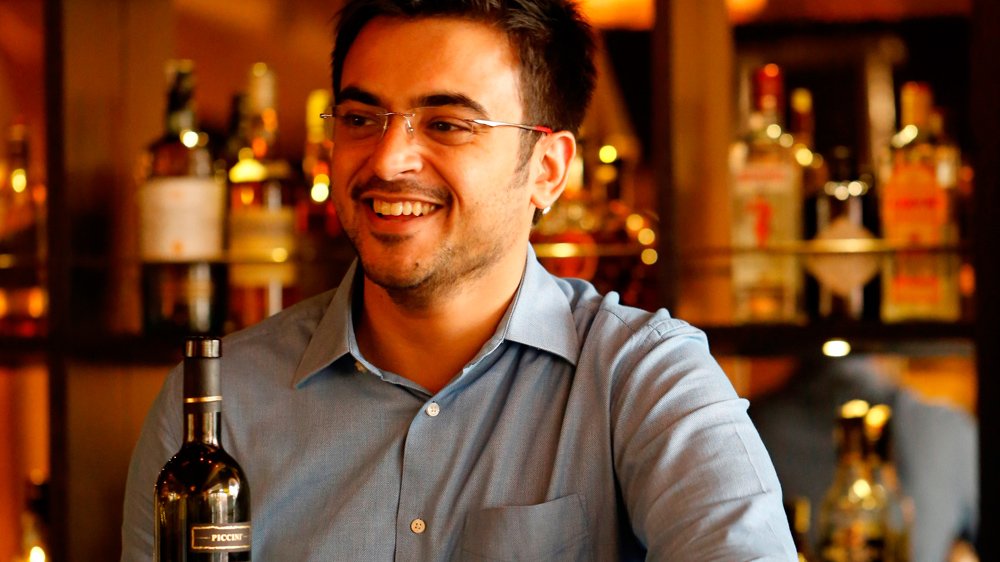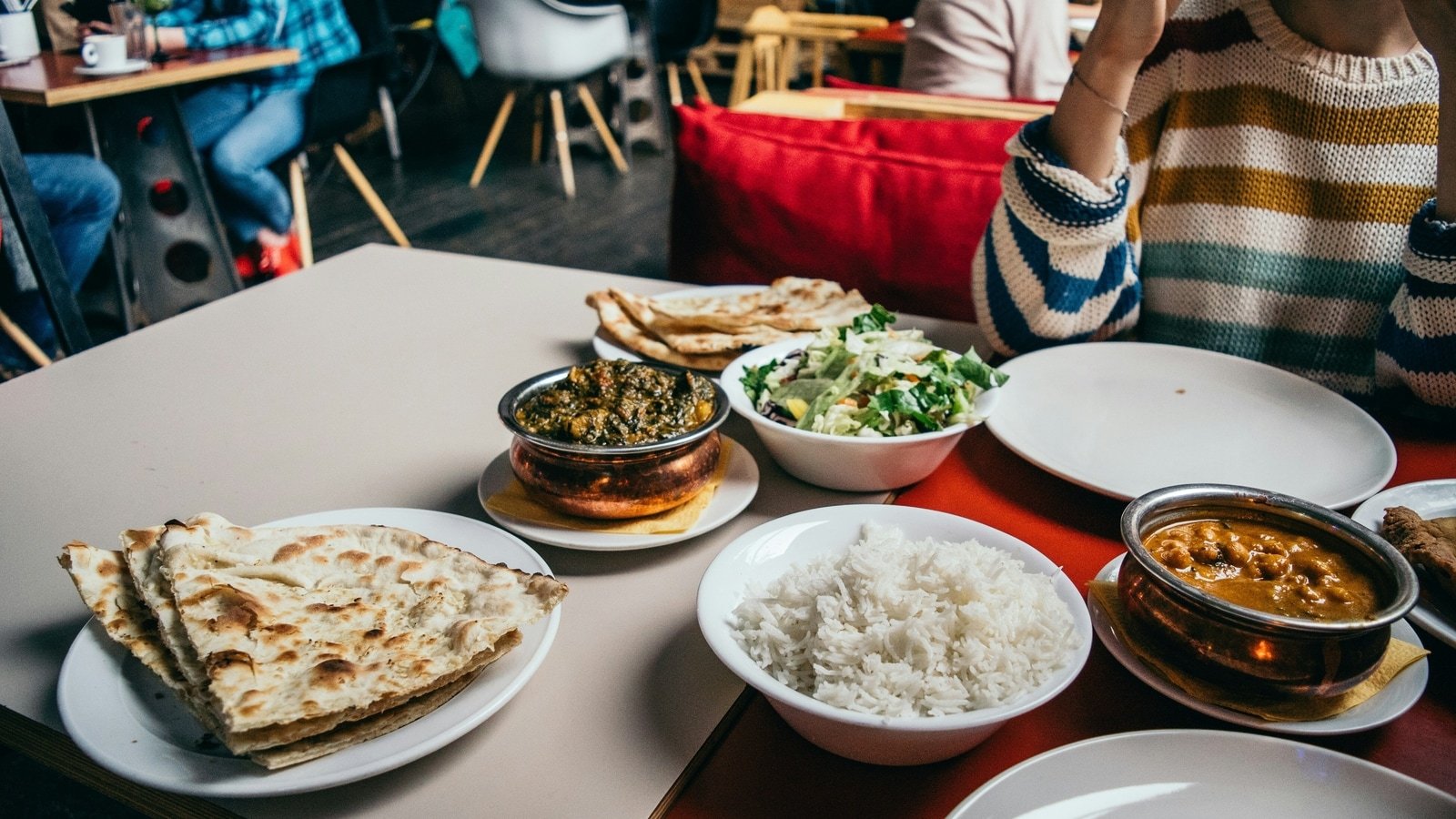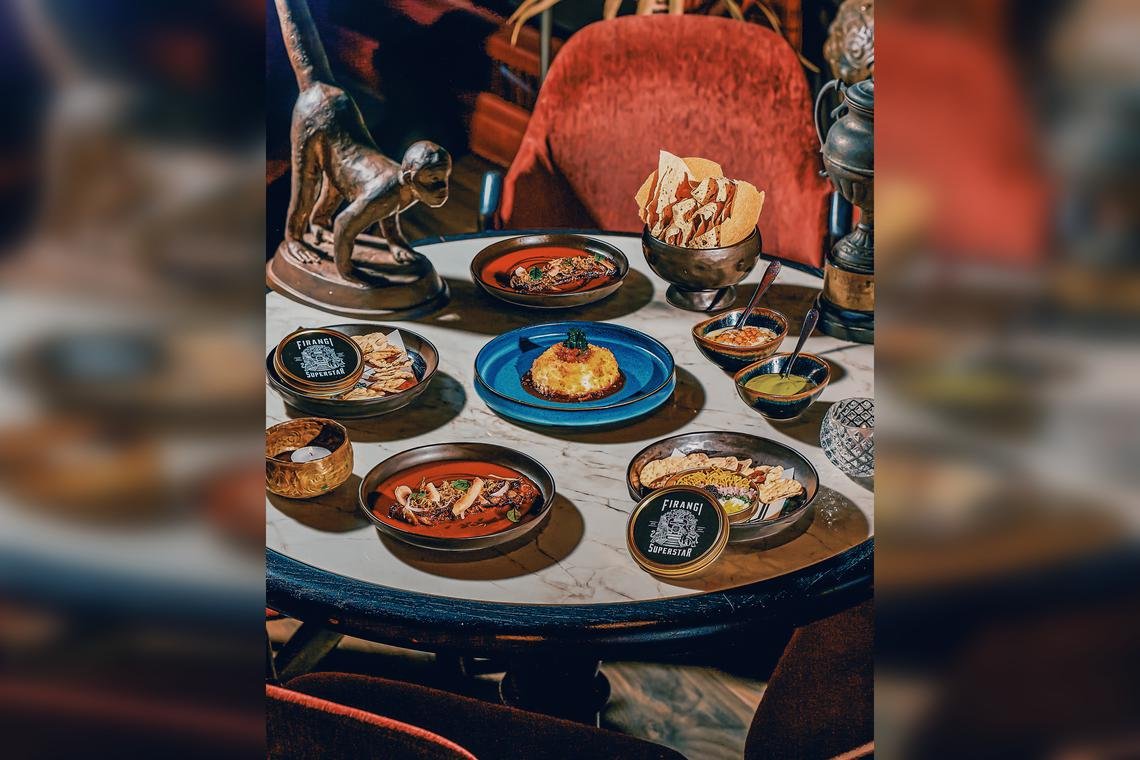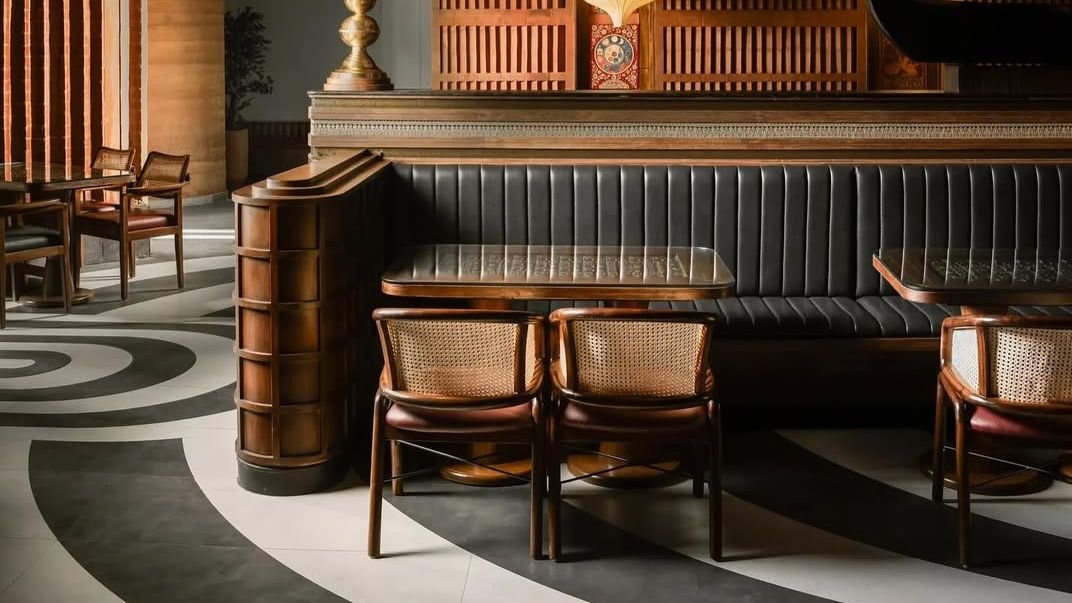Restaurants & Food
Eating Local and Appreciating Regional Indian Food is Next Big Trend

Anurag Mehrotra, CEO of Charcoal Eats, co-founded the quick-service restaurant (QSR) brand along with Krishnakant Thakur (COO), Gautam Singh (CTO) and Mohammed Bhol (CPO) in April 2015 with a strong belief that ‘good food can excite people’. The aim was to enhance the Indian palate by building a large and scalable restaurant brand in the country, thereby, providing great quality food at an affordable price.
Read on the exclusive interview of the Co-founder and CEO of Charcoal Eats, Anurag Mehrotra who tells it all – the journey of the QSR brand, key accomplishments and the expansion plans.
From Charcoal Biryani to Charcoal Eats – The Journey
I am a Commerce Graduate from the University of Allahabad and an MBA from Asian Institute of Management, Manilla. Prior to venturing into the entrepreneurial journey, I have held senior positions in large corporates like Kotak and Edelweiss. I have been a part of the startup domain for the past six years, and I, currently, serve as a Director on the boards of Coverfox, Capzest, Woodbox & Alien Adventure.
Charcoal Biryani, as it was originally called, started with six biryanis served through multiple cloud kitchens across Mumbai. In August 2017, we pivoted to a customer facing dine-in model with our first outlet in Pune. We also moved to a franchise model for these new outlets. To support this retail push, we started expanding our menu to offer an all-day meal and snacking options, and subsequently rebranded as Charcoal Eats in March 2018. Today, Charcoal Eats offers high quality, all-day food options across snack and meal times that include Biryanis, Starters, Rolls, Loaded Fries, Curries, Puff Pizzas, Beverages and Desserts. Customers can dine-in, takeaway or order for delivery, as per their convenience.
Key Accomplishments of Charcoal Eats in 2018
Charcoal Eats is currently present with 38 dine-in and express outlets across 12 cities – Mumbai, Navi Mumbai, Thane, Pune, Gurugram, Nashik, Chennai, Gandhinagar, Jamshedpur, Indore, Bengaluru and Jaipur. We have also set the groundwork for our international foray.
In terms of revenues, we have shown growth of almost three times from April 2018 to December 2018, with a revenue run rate of INR 17.5 mn for December 2018 v/s INR 6.0 million in April 2018. Our order numbers have shown a 350% growth from April 2018 to December 2018, with approx. 48,000 orders in December 2018, up from 13,600 orders in April 2018.
Also Read: Five Reasons Why QSR Is An Evergreen Business
This growth has been driven by two factors – our pivot from a ‘meals only’ to an ‘all-day dining’ menu and the increase in Charcoal Eats outlets across the country.
Our menu comprises a wide range of high-quality all-day dining and snacking options that offer adequate calories, at affordable prices. This delicious menu is now available to customers at their convenience – dine-in, takeaway or delivery. Customers can order delivery online through our website, mobile app or any of the leading food aggregation platforms, or they can simply call our customer care to place their delivery orders.
A key element of our growth story is the hassle-free, high ROI franchise model for people looking to start their food business. The company takes care of the food, supply chain, marketing, technology and customer care, while the franchisee focuses on managing outlet operations and local area marketing. Multiple outlet formats (dine-in, express, mini) allow us to open outlets suitable to a location’s specific requirement/ profile. All Charcoal Eats outlets are designed to be capital and resource efficient, enabling quick break-even and profitability at an outlet level.
Charcoal Eats follows a hybrid distribution model, with a mix of the franchise and company-owned outlets. This mix is currently at 50:50. Our franchise partners are motivated to associate with Charcoal Eats due to our obsessive focus on quality and customer delight.
The company proactively seeks customer feedback and has made many product/service improvements over the past couple of years based on these customer insights.
We have been recognised by Radio City, a leading pan India FM radio station, for Excellence in Food Retail, 2018.
Charcoal Eats’ Expansion Plans for the Next Two Years
“We are quite bullish on our growth both in terms of volumes and revenues across all our formats and locations.”
We are increasing our presence in the metros and at the same time, we have started expanding to tier II cities. We are already present in Jaipur, Jamshedpur, Gandhinagar and Indore. We foresee substantial domestic growth coming from tier II cities and have ambitious plans to establish our presence in many more such cities by FY 2020.
Innovations at Charcoal Eats in the Upcoming Years
We will continue on our mission to bring consistently delicious Indian food to people across the country. Ensuring increased levels of consistency in taste and maintaining high quality will be our focus of innovation. Effective, environment-friendly packaging will be another area of innovation focus for us. Menu innovations will take the form of new products, flavours and new category introductions.
Optimizing Menu Boards to Increase Sales
Menu boards are cost-effective to keep customers up-to-date with pricing, products and promotions. They also help in faster service as customers make quick menu decisions. We use these to display real-time changes in the product pricing and availability to the consumers.
Our automated menu boards also allow us to promote daily specials and offers that help drives sales and contribute to increased profits.
Technology Innovations in the QSR Industry in Upcoming Years
We see the following areas where technology innovations will play an important role in the QSR industry in coming years:
– Personalised food recommendations to consumers, based on their past behaviour and preferences.
– Accurate demand prediction for efficient capital and supply chain management as well as waste reduction.
– Dynamic pricing based on demand-supply patterns.
– Enhanced multi-channel customer engagement to deepen the relationship.
Must Read: Four Trends QSRs Shouldn’t Ignore in 2019
Food Trends in 2019
Some key food trends in 2019 are:
– Emphasis likely to be on ethnic regional Indian cuisines.
– People are extremely health-conscious nowadays and so the focus would be on eating natural food, especially organic, non-processed and genetically modified food.
– Health and wellness will be the basis for preference for a larger number of consumers.
– QSRs will increasingly look at ways of making their food more wholesome and free of harmful additives in order to appeal to the growing number of health-conscious consumers.
– With eco-friendly and zero waste management becoming the focus of the food industry, sustainability is the core of how food will be approached.
– Alternative ingredients like goat milk or soya milk instead of cow milk will be preferred especially the ones that are at par in nutritional value.
– Innovative food packaging will replace traditional methods to meet the needs of environmentally conscious millennials.
– Snacks will be fancy and an important element of the daily routine.
– Preference for home-cooked food among the younger generation is increasing and this offers scope for food-tech companies to offer interesting meal kits for cooking a wide range of delicious wholesome meals at home.
Restaurants & Food
28 new restaurants in India you should grab a meal at this August – Vogue India
Restaurants & Food
The Taste by Vir Sanghvi: Indian restaurants shine globally with Michelin stars and authentic flavours

You have probably heard of Semma, the only Indian restaurant in New York to win a Michelin star. And of Gymkhana, the only Indian restaurant with two Michelin stars in London. Of Jamavar, the only Indian restaurant in the world to have won Michelin stars in three different avatars in three different cities: London, Doha and Dubai.
What, you may well ask, do these restaurants have in common?
There are two answers to this question. The first is the obvious one: they are all Indian restaurants run by chefs who have worked or trained in India. Vijaya Kumar of Semma is very proud of cooking the authentic cuisine of Tamil Nadu’s not-so-elevated castes and makes it hot and spicy. (He started out at the Taj Connemara in Chennai.) His boss, and one of the founders of Unapologetic Foods, which owns Semma, Chef Chintan Pandya, says that the group gets its name from its determination to refuse to apologise for the flavours and oil that characterise Indian food. (Chintan is ex-Oberoi.)
In London, one of the first things that Karam Sethi, the chef-founder of Gymkhana, said to me when I called to congratulate him on Gymkhana’s two stars was “it’s real Indian food, not ‘modern’ Indian.” Gymkhana serves the sort of food Indians actually eat, not a poncy, spice-deprived version. Gymkhana’s Executive Chef Sid Ahuja is ex-Oberoi and Sethi himself trained with ITC.
The most recognisable Indian of the top global restaurants is Jamavar. It was founded by Dinesh Nair, whose family used to own Leela Hotels, and is run by his whiz-kid daughter, Samyukta. The London Jamavar is international in clientele but you will nearly always see a top Indian movie star or cricketer there. This may have something to do with the fact that its chef, Surender Mohan, commands after his years working with the Leela group in India.
Samyukta and Surender took Jamavar to Doha where it became just one of two restaurants to win a Michelin star. (The other restaurant with a star is run by Alain Ducasse.) Next, they opened in Dubai and within a few months of opening, they had a star there too.
I met Surender at the Michelin ceremony in Dubai and was pleased to see that he was one of the few chefs not to be intimidated by the occasion and he gave the longest and best speech of the evening. But then I guess he is now used to attending these events in city after city.
Clearly something new and unusual is happening with Indian food abroad even if we don’t fully understand it here in India. There have been, broadly, four phases with Indian food in the West. The first was the ‘ethnic food’ phase when Indian food became the browner equivalent of chop suey and restaurants served mostly made-up Indian dishes at inexpensive prices.
The second was when Indian food went upmarket but was also Frenchified and plated. In the UK, restaurants serving this kind of food were celebrated and some got Michelin stars. In New York, Floyd Cardoz served two kinds of cuisine. At Tabla, he served a nouvelle take on Indian food and got three stars from the New York Times. But downstairs, at the Bread Bar, the food was more basic and less nouvelle. Even so, the general rule was that if you wanted rave reviews and high-profile rich guests, then you moved away from traditional Indian.
The third phase coincided with a global change in food preferences when French food ceased to be as admired as much. As El Bulli and later, Noma, set the trend, this was reflected in Indian food too. Gaggan Anand worked with the Adria brothers of El Bulli and opened a restaurant in Bangkok that served the kind of Indian food nobody had imagined could exist. Also, in Bangkok, Garima Arora opened Gaa which went on to win two Michelin stars. There was a fair amount of cross-fertilisation. Garima had worked with Rene Redzepi at Noma and with Gaggan. Redzepi himself had worked at El Bulli.
Almost simultaneously, Manish Mehrotra, whose resume included no great restaurants, invented his own version of modern Indian cuisine at Delhi’s Indian Accent. Mehrotra’s background was oriental cuisine so he had no interest in Frenchifying his food. Mehrotra and Gaggan ended up being the most influential Indian chefs of this century with their dishes being copied all over the world.
Himanshu Saini, the only Indian chef with a restaurant that has three Michelin stars (Dubai’s Tresind Studio) worked with Manish and is candid about his debt to the master.
But now I think we are into a third phase. People want Indian food without the frills. They want to eat like Indians eat in India. Vikas Khanna, India’s most famous chef, opened Bungalow in New York, serving food that was no different to the food he would serve in India and got three stars from the New York Times, and there’s usually a queue for tables outside his restaurant. At the less expensive end of the market Dhishoom which claims to be inspired by Mumbai’s Irani restaurants is so successful across the UK that it has now set its sights on America.
Of course, no change is absolute. There are still Bangladeshi curry houses calling themselves Indian restaurants. The Frenchified expensive Indian restaurants survive. The Gaggan-style modern Indian is still a rage.
But the trend is clear: Keep it simple and keep it spicy.
Restaurants & Food
Food Picks: Modern Indian with a Western twist at Firangi Superstar

SINGAPORE – Do not be fooled by Firangi Superstar’s plain terracotta exterior. There is nothing minimalist about the experience here.
It overwhelms before the first bite even hits the table, spinning you through rooms crammed with memorabilia. Think American film-maker Wes Anderson on a trip through Delhi, a kind of kitschy fantasyland for colonial nostalgists wrapped in ornate wallpaper and studded with vintage firearms.
Thankfully, this meeting of worlds is far more amicable when confined to the kitchen of this modern Indian restaurant, which opened in 2021.
Firangi Superstar’s decor is as bold as its menu.
PHOTO: FIRANGI SUPERSTAR
Have a seat. Red? Blue? Cushion? Chair? Oh, here comes the menu, recently revamped and folded into a newspaper – with actual clippings, by the way, just in case you were done gawking at the mounted moose heads on the wall and wanted something else to look at.
Open it up. Today’s big story is a list of dishes, both old and new, Indian and international, all with characteristically eyebrow-waggling names.
Some riff off old iterations – This Is Also Not Aloo Gobi ($18++) still holds the traditional curry at arm’s length, even as it borrows its taste. Others squeeze in a winky pun – We’re Goan-Ing To Porto! ($96) beckons to diners with grilled Iberico pork and sorpotel chilli sauce.
Big personalities work only if backed up with big flavours, and Firangi Superstar’s bite is as good as its bark. Starters like Papi’s Jammed Gun ($29++), wagyu beef tartare with caviar, grated egg and gunpowder spice, and Big Baller Peperoner ($28++), its version of paneer Manchurian, with fried burrata and Manchurian chilli sauce, expertly fuse Western ideas with south Asian flair.
The Bengal Bake-Off from Firangi Superstar.
PHOTO: FIRANGI SUPERSTAR
Off to a riotous start, I move on to mains. The Bengal Bake-Off ($108++) is trotted out in show-stopping fashion: a salt-baked seabass emerges from its crust, tender and steaming, and is robed in Kasundi cream.
Back In The Saddle ($21++ for 100g) triumphantly rides in on tandoori-spiced lamb, crowned with confit garlic and chilli leaf. All these dishes also come in vegetarian form, should you so desire.
In the middle of this lip-smacking extravagance, a few humble sides quietly sneak their way onto the table. Turn your attention immediately to the black garlic naan ($14++). Look how pillowy the bread is, breathe in its nutty fragrance. You already know it is going to be a knockout.
End the night with some banoffee fritters ($14++) or Rasmalai “tres leches” ($16++). Recline back on your throne of pillows, cocktail or royal melon lassi ($20++) in hand.
Firangi – Hindi slang for foreigner – or no, one really does feel like a superstar here.
Where: 01-03, 20 Craig Road
MRT: Maxwell/Tanjong Pagar
Open: Noon to 2.30pm, 5.30 to 10pm (Mondays to Saturdays)
Info:
www.firangisuperstar.com
-

 Brand Stories2 weeks ago
Brand Stories2 weeks agoBloom Hotels: A Modern Vision of Hospitality Redefining Travel
-

 Brand Stories2 weeks ago
Brand Stories2 weeks agoCheQin.ai sets a new standard for hotel booking with its AI capabilities: empowering travellers to bargain, choose the best, and book with clarity.
-

 Destinations & Things To Do3 weeks ago
Destinations & Things To Do3 weeks agoUntouched Destinations: Stunning Hidden Gems You Must Visit
-

 Destinations & Things To Do2 weeks ago
Destinations & Things To Do2 weeks agoThis Hidden Beach in India Glows at Night-But Only in One Secret Season
-

 AI in Travel3 weeks ago
AI in Travel3 weeks agoAI Travel Revolution: Must-Have Guide to the Best Experience
-

 Brand Stories1 month ago
Brand Stories1 month agoVoice AI Startup ElevenLabs Plans to Add Hubs Around the World
-

 Brand Stories4 weeks ago
Brand Stories4 weeks agoHow Elon Musk’s rogue Grok chatbot became a cautionary AI tale
-

 Brand Stories2 weeks ago
Brand Stories2 weeks agoContactless Hospitality: Why Remote Management Technology Is Key to Seamless Guest Experiences
-

 Asia Travel Pulse1 month ago
Asia Travel Pulse1 month agoLooking For Adventure In Asia? Here Are 7 Epic Destinations You Need To Experience At Least Once – Zee News
-

 AI in Travel1 month ago
AI in Travel1 month ago‘Will AI take my job?’ A trip to a Beijing fortune-telling bar to see what lies ahead | China







